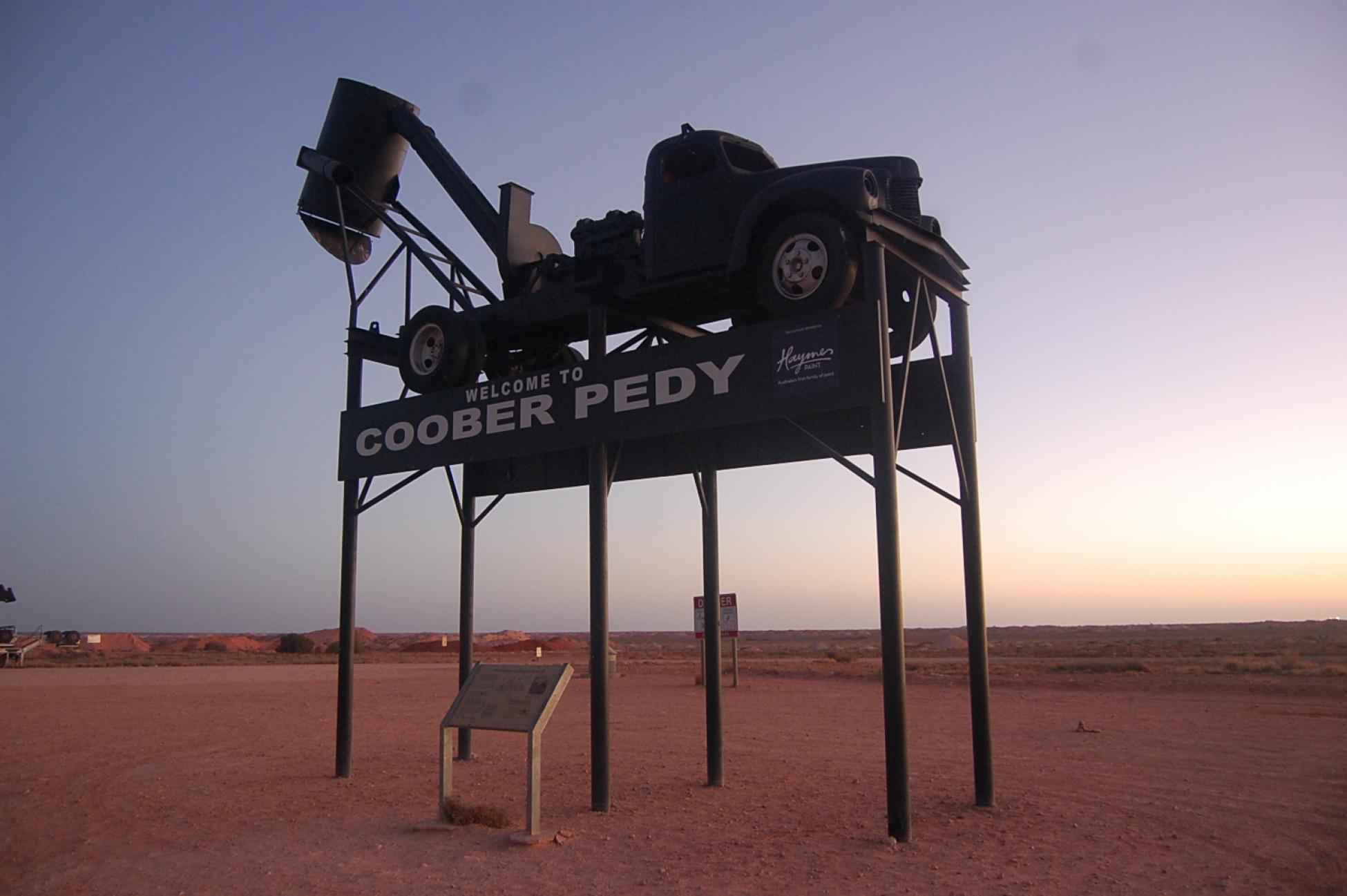What compels people to call this vast, sparse environment—which resembles an unearthly apocalyptic wasteland—"home"? With a paltry population of 3,500, many of which are renowned for residing underground, it contrasts starkly with the nearest city. The red desert landscape and endless mounds of dirt are a far cry from the beachside lifestyle and coffee mornings that reign supreme in Adelaide.
The sheer remoteness and lack of amenities are enough to put off most people. However, working in hospitality, I've had the opportunity to speak to a range of different people. Through sharing their stories I hope to shed some light as to why some choose to call Coober Pedy home.
Waves of tourists pass through the dusty little town on a daily basis, in vehicles that looked kitted out to face an imminent apocalypse. Many are Australians who have traversed insane distances to venture into the heart of their motherland, while others have come further afield, from all corners of the globe.
As for the residents of Coober Pedy, they can be split into two distinct categories: Those who choose to reside here and those who do not. Let me explain.
The residents of Coober Pedy can be split into two distinct categories: Those who choose to reside here and those who do not
The workforce, specifically in the area of hospitality, is comprised of individuals who come to Coober Pedy seeking permanent residency in Australia. Coober Pedy is usually not their first choice of places to live, and many come from Melbourne. There is an extensive Sri Lankan community here (which I had not anticipated), in addition to people from India, Indonesia and the Philippines, as well as a pocket of European backpackers. As a result, the local supermarket stocks some interesting food products and reflects the nature of the inhabitants.
There are then the residents who choose to live here. A strong contingent of Aboriginals have a rich history with this inhospitable land. For thousands of years, they have traversed this area. It was only the discovery of opal in 1915 that put Coober Pedy on the map, drawing interest from miners to settle here and try their luck. The discovery of opal forever changed the population of Coober Pedy and made it much more diverse.
During my first week in Coober Pedy, I went on a tour of the opal mines. My ears pricked up when the tour guide spoke with an Eastern European accent. He came here 22 years ago from Yugoslavia to visit his uncle who was an opal miner. Upon witnessing the mining process—quality opals can be worth tens of thousands of dollars—he was hooked and after flying home immediately applied for residency in Australia.
Since then, Coober Pedy has been his home. Initially, he had quite a big mining operation, using machinery that cost about $3,000 a week. The cost added up, which caused stress, so now he supplements his income working as a tour guide. Listening to him talk, his passion was palpable. I could hear in his voice that find day he will strike it big and find his opal.
The lure of the opal lives strong in Coober Pedy, where anyone has the potential to make their fortune.
The hotel where I work caters for a lot of the mining groups, who work locally. That's how I met George the minder, an interesting figure with a thick grey moustache, who is forever sporting a bandana emblazoned with a print of the American flag and a cigarette permanently dangling from his lips. George speaks in measured tones, reflecting his relaxed attitude. He used to live in Adelaide, but found the hustle of city life wasn't for him, so relocated to Coober Pedy. He's been calling the town home for the last 50 years.
When George first told me that, I thought "Wow. I don't think I could reside here for that long." However, he puts forward an interesting point—is living in a place devoid of overcrowding and the stress synonymous with cities really such a crazy idea? In cities, it has become the norm to live in cramped spaces and pay an outrageous price for the inconvenience.
The more I travel and the more bizarre places I reside I believe that it is possible to adapt to any environment. None are really good or bad just different. It opens your eyes to new possibilities and the world becomes a little bit bigger.
For the moment, I am enjoying the desert lifestyle where the pace of life is slow and I get to wake up to the most spectacular sunsets.
Add this article to your reading list




